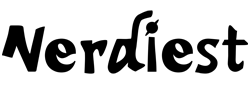In an increasingly interconnected world, the Internet of Things (IoT) stands as one of the most influential technological phenomena.
From smart homes to connected healthcare, IoT is reshaping how we live, work, and play.
This article provides an in-depth understanding of the Internet of Things, its applications, and how it will shape the future.
Table of Contents
Defining the Internet of Things
The Internet of Things, often referred to as IoT, is a network of interconnected devices that communicate and share data with each other over the internet.
These devices, or “things,” could range from everyday household items like refrigerators and thermostats to industrial machinery, wearable devices, and even vehicles.
Each IoT device is embedded with sensors, software, and other technologies to connect and exchange data.
IoT in Everyday Life
One of the most recognizable applications of IoT is in the realm of smart homes.
Home automation systems allow various household devices, such as lights, appliances, security systems, and thermostats, to communicate and be controlled remotely.
This not only enhances convenience and comfort but also improves energy efficiency.
IoT in Healthcare
The healthcare sector has greatly benefitted from IoT technologies. Devices such as wearable fitness trackers, remote monitoring tools, and smart implants are transforming patient care.
They facilitate remote health monitoring, enable predictive maintenance of medical devices, and enhance patient experience.
IoT in Manufacturing and Industry
Often referred to as the Industrial Internet of Things (IIoT), IoT applications in manufacturing are truly game-changing.
IoT devices facilitate predictive maintenance of machinery, energy management, supply chain optimization, and safety monitoring.
By enabling real-time monitoring and data analysis, IoT enhances productivity, efficiency, and safety in industrial environments.
IoT in Agriculture
IoT is revolutionizing agriculture through precision farming.
IoT devices can monitor soil moisture, crop growth, and livestock health, enabling farmers to make data-driven decisions and automate various farming operations.
This can lead to increased crop yield, improved resource usage, and overall operational efficiency.
Challenges and Concerns
Despite its potential, IoT also presents several challenges and concerns. Privacy and security are primary among these.
As more devices connect to the internet, they become potential entry points for cyberattacks.
Moreover, the vast amounts of data collected by IoT devices raise concerns about data privacy and protection.
Interoperability, or the ability of devices from different manufacturers to communicate with each other, is another challenge.
With an absence of universal standards, creating a seamless IoT ecosystem can be difficult.
The Future of IoT
Looking ahead, IoT is set to become even more integrated into our lives.
With advancements in AI and machine learning, IoT devices will become smarter, making our lives more comfortable and convenient.
Further, with the development of 5G technology, the speed and scale of IoT connectivity will grow exponentially.
Conclusion
The Internet of Things is an integral part of our digital future, transforming various aspects of our lives and industries.
As we continue to navigate the complexities and potential of this interconnected world, understanding IoT becomes vital.
While challenges persist, the potential benefits of IoT make it a compelling area for continued exploration and development.
FAQs for Internet of Things (IoT):
- What is the Internet of Things (IoT)?
- IoT refers to a network of interconnected devices and objects that communicate and share data with each other over the internet. These devices can include everyday objects, appliances, vehicles, and more, all equipped with sensors and technology for data exchange.
- How does IoT work?
- IoT devices collect data through embedded sensors, process it, and then transmit the information to other connected devices or a central system through the internet. This enables real-time monitoring, analysis, and control of various processes.
- What are examples of IoT devices?
- Examples include smart home devices (thermostats, lights, cameras), wearable fitness trackers, industrial sensors, connected cars, and smart cities infrastructure (smart meters, traffic management systems).
- What are the benefits of IoT?
- IoT offers enhanced efficiency, improved decision-making through data analysis, automation of tasks, cost savings, and the ability to monitor and control devices remotely. It also opens up possibilities for innovation in various industries.
- Are there security concerns with IoT?
- Yes, security is a significant concern in IoT. The interconnected nature of devices makes them susceptible to cyber threats. Ensuring proper security measures, such as encryption, authentication, and regular updates, is crucial to mitigate risks.
- What is the role of data in IoT?
- Data is central to IoT. Devices generate and share data, which is then analyzed to derive insights, optimize processes, and make informed decisions. Handling and securing this data are critical aspects of IoT implementation.
- How is IoT different from the Internet?
- While the internet connects people and computers, IoT extends this connectivity to physical objects. IoT enables these objects to collect and exchange data, facilitating automation and efficiency in various domains.
- Can IoT be applied in healthcare?
- Yes, IoT has numerous applications in healthcare, such as remote patient monitoring, smart medical devices, and inventory management. It helps in providing better healthcare services and improving patient outcomes.
- What challenges does IoT face?
- Challenges include security and privacy concerns, interoperability issues among devices from different manufacturers, standardization, and the management of vast amounts of data generated by IoT devices.
- Is IoT only for large businesses, or can individuals benefit as well?
- Both individuals and businesses can benefit from IoT. While businesses may implement IoT for industrial automation, individuals can use smart home devices for convenience, energy efficiency, and improved security.
These FAQs provide a basic understanding of the Internet of Things and its various aspects.



Comments